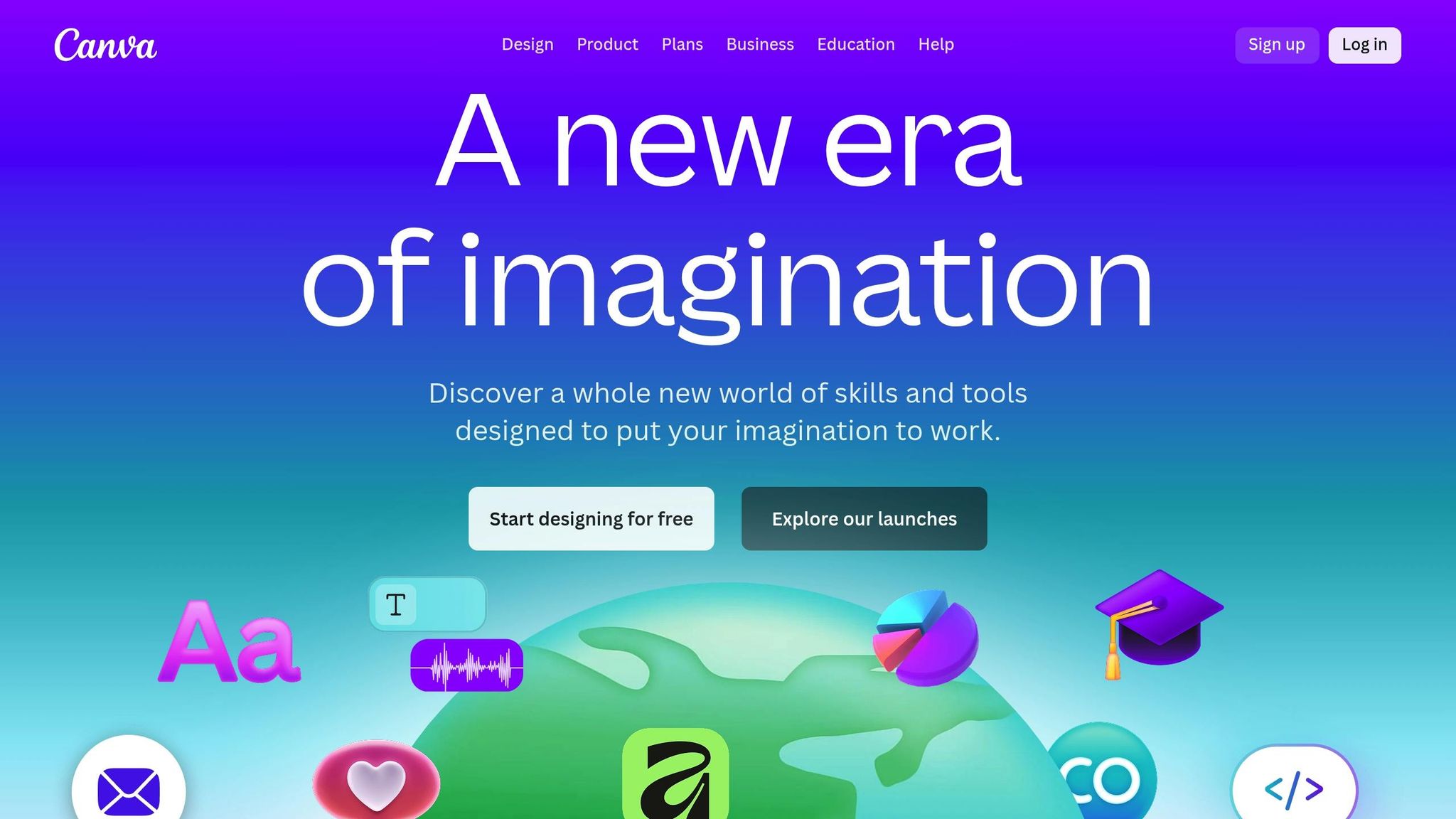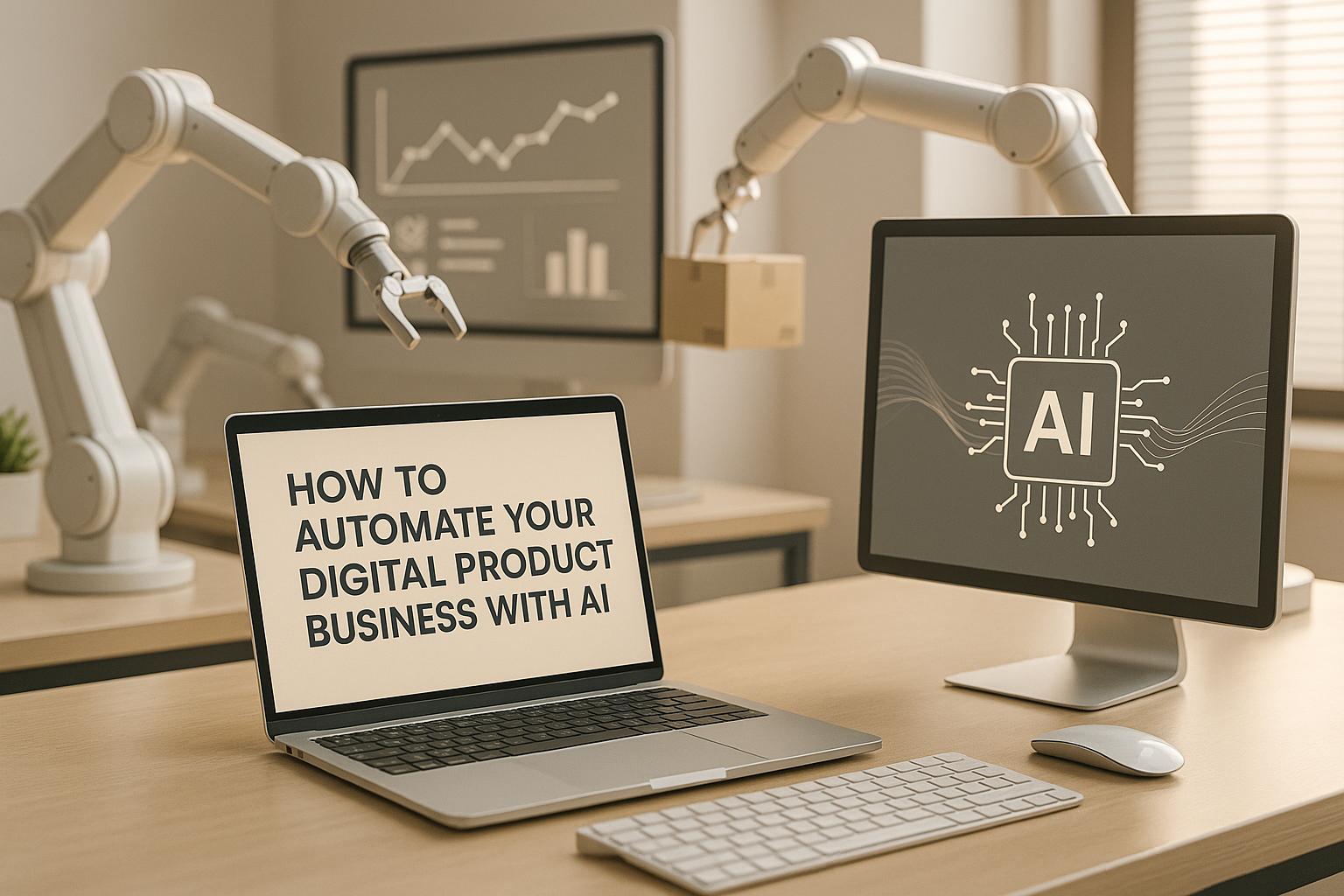In today’s fast-paced digital era, small and medium-sized business leaders face a pressing question: How can we scale without sacrificing creativity or adding more hours to our workload? One transformative answer lies in leveraging AI to automate key aspects of your digital product business. This article breaks down how to create a streamlined, AI-driven workflow to save time, boost productivity, and build a profitable enterprise. Whether you’re a seasoned entrepreneur or just starting, these actionable insights will help you harness AI effectively.
Why Digital Products and AI Are the Perfect Match in 2025
Digital products - like planners, templates, and eBooks - offer a low-risk, scalable way to start or expand a business. With AI tools, not only can you automate 90% of the process, but you can also free up time to focus on strategy and creativity. Here’s why this combination works so well:
- Lower Financial Risk: Testing digital products is cost-effective. Using AI, you can identify what customers want before making significant investments.
- Time Efficiency: AI handles repetitive tasks like research, social media, and email marketing, reducing your workload from 30+ hours a week to less than 10.
- Scalability: Once your system is set up, it runs largely on autopilot, allowing you to grow without adding headcount.
Now, let’s dive into the practical steps to build and automate your digital product business.
Step 1: Nail Your Market Research with AI
The foundation of any successful business is understanding customer needs. In this case, AI can transform the often time-consuming process of market research into an efficient, automated system. Here’s how:
Set Up a Market Intelligence System
- Create a Google Sheet: Include columns for product title, price, popular features, and notes.
- Use AI Tools for Data Collection:
- Profit Tree: An excellent tool for identifying top-selling products and trends on platforms like Etsy.
- Reddit Analysis: AI scrapers like ChatGPT (using its advanced agent feature) or BRAAI can mine forums for genuine customer frustrations and unmet needs.
- Analyze Data: Feed findings into tools like ChatGPT. Use prompts to uncover:
- Top customer complaints.
- Features of high-priced competitors.
- Gaps in the market.
Pro Tip: Consistency matters! Dedicate 20–40 minutes every Monday to refresh your market data and refine your understanding of customer needs.
Step 2: Create High-Value Digital Products
Once you understand your audience, the next step is to design a product that solves their pain points. Here’s how AI can help streamline product creation:
Generate a Product Blueprint
Use ChatGPT to craft a detailed outline for your product. For instance, if your audience wants a simple, printable daily planner, provide AI with the following:
- Customer pain points (e.g., "overwhelming layouts" or "limited note space").
- Desired features (e.g., "printable" or "compatible with GoodNotes").
From there, ChatGPT will produce a comprehensive product blueprint, including layout, structure, and design elements.
Use Design Tools Like Canva

While AI provides the framework, tools like Canva or pre-made templates from Creative Fabrica can simplify the actual design process. Focus your efforts on:
- Customizing templates to address specific customer needs.
- Ensuring visual clarity and functionality.
Note: For dynamic products like digital planners, consider formats like editable PDFs or Notion templates, based on customer preferences identified in your research.
Step 3: Automate Your Social Media Strategy
Gone are the days of spending hours brainstorming and creating posts for social media. AI can handle this for you, allowing you to engage your audience effectively across platforms.
Start Simple
- Choose One Platform: For beginners, stick to one channel (e.g., Threads or LinkedIn).
- Batch Content Creation: Use ChatGPT to draft a 7-day content calendar based on your product’s benefits, customer pain points, and solutions.
- Example prompt: "Create a week of posts addressing common frustrations with planners and how my product solves them."
Schedule and Analyze
- Use free tools like Buffer or Later to schedule posts in advance.
- Track engagement metrics (likes, shares, comments) and refine your strategy weekly.
- Feed performance data back into ChatGPT to help it generate better-performing content over time.
Pro Tip: Create content that adds value! Instead of "Buy my planner", focus on topics like "How to actually stick to your goals this year."
Step 4: Simplify Email Marketing with AI
Email marketing can feel daunting, but with AI systems, you can set up automated sequences that nurture relationships and drive sales.
Automated Email Sequences
Set up two key sequences:
-
For Buyers:
- A 5–8 email welcome series that introduces your product’s features, tips for use, and additional value.
- Example prompt for ChatGPT: "Write a series of emails that build rapport, offer usage tips, and encourage engagement."
-
For Non-Buyers:
- A 3-email sequence targeting those who downloaded your free template but didn’t purchase.
- Address potential objections (e.g., cost, unfamiliarity with digital planners) and include social proof or limited-time offers.
Tools You Can Use
Platforms like Kit or Mailchimp offer beginner-friendly solutions. Pair them with AI to draft compelling, on-brand emails efficiently.
Step 5: Test, Iterate, and Scale
Automation isn’t a "set it and forget it" process. To optimize your results, you need to continuously test and improve.
- Track Performance: Monitor what products sell best, which posts resonate most, and which emails convert readers into customers.
- Refine Your Approach: Use insights from AI to improve product features, adjust messaging, and optimize your marketing funnel.
- Expand Gradually: Add new products, platforms, or automation workflows only once your core systems are running smoothly.
Key Takeaways
- Research First: Dedicate time to understanding your audience’s pain points through tools like Profit Tree and Reddit scraping.
- AI as an Assistant, Not a Replacement: While AI streamlines tasks, you’ll still need a human touch for product design and personal branding.
- Start Small: Focus on one platform, product, and automation sequence before expanding.
- Consistency Wins: Weekly research and regular testing are critical to staying ahead of competitors.
- Leverage Tools: Platforms like Canva, ChatGPT, and email marketing tools simplify execution, allowing you to focus on strategy.
Conclusion: The Future of Work-Life Balance
By integrating AI into your digital product business, you can achieve more with less effort. Gone are the days of grinding 12-hour days to grow your brand. With the right systems in place, you can reclaim your time, focus on creativity, and achieve sustainable growth. Take it one step at a time - automation isn’t about doing everything all at once; it’s about building a smarter, more efficient workflow to support your long-term vision.
In 2025, the businesses that thrive won’t just be those that adopt AI but those that use it with intention and strategy. Start small, stay consistent, and watch how this transformative approach reshapes your entrepreneurial journey.
Source: "I Asked ChatGPT to run my $42K/Month Digital Product Business" - Luna Vega, YouTube, Sep 18, 2025 - https://www.youtube.com/watch?v=xwq58H3y5FE



